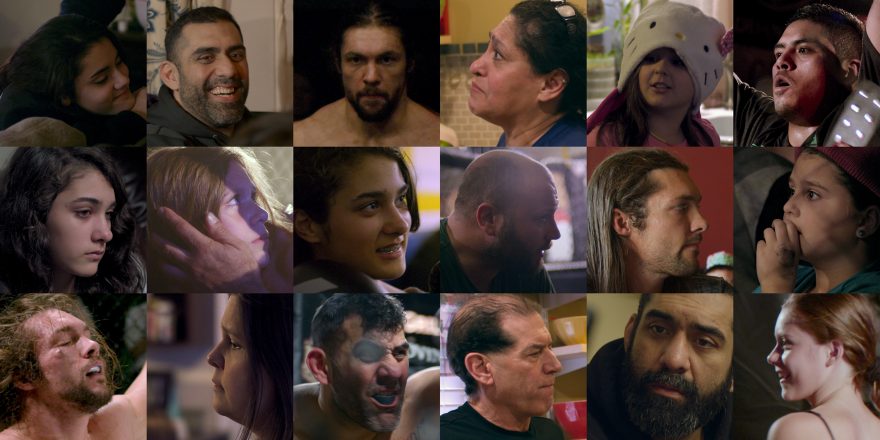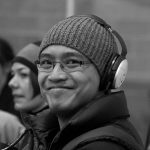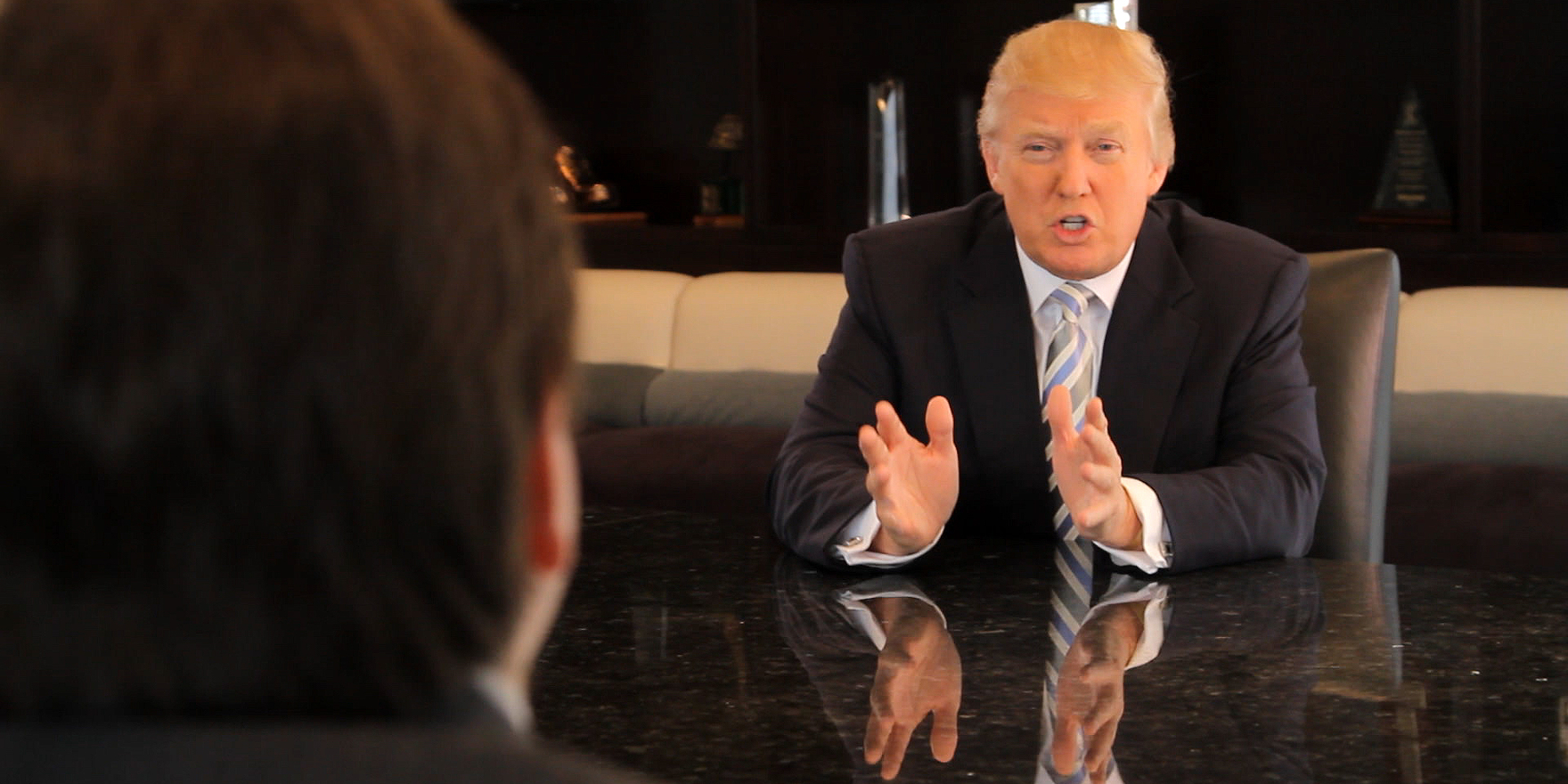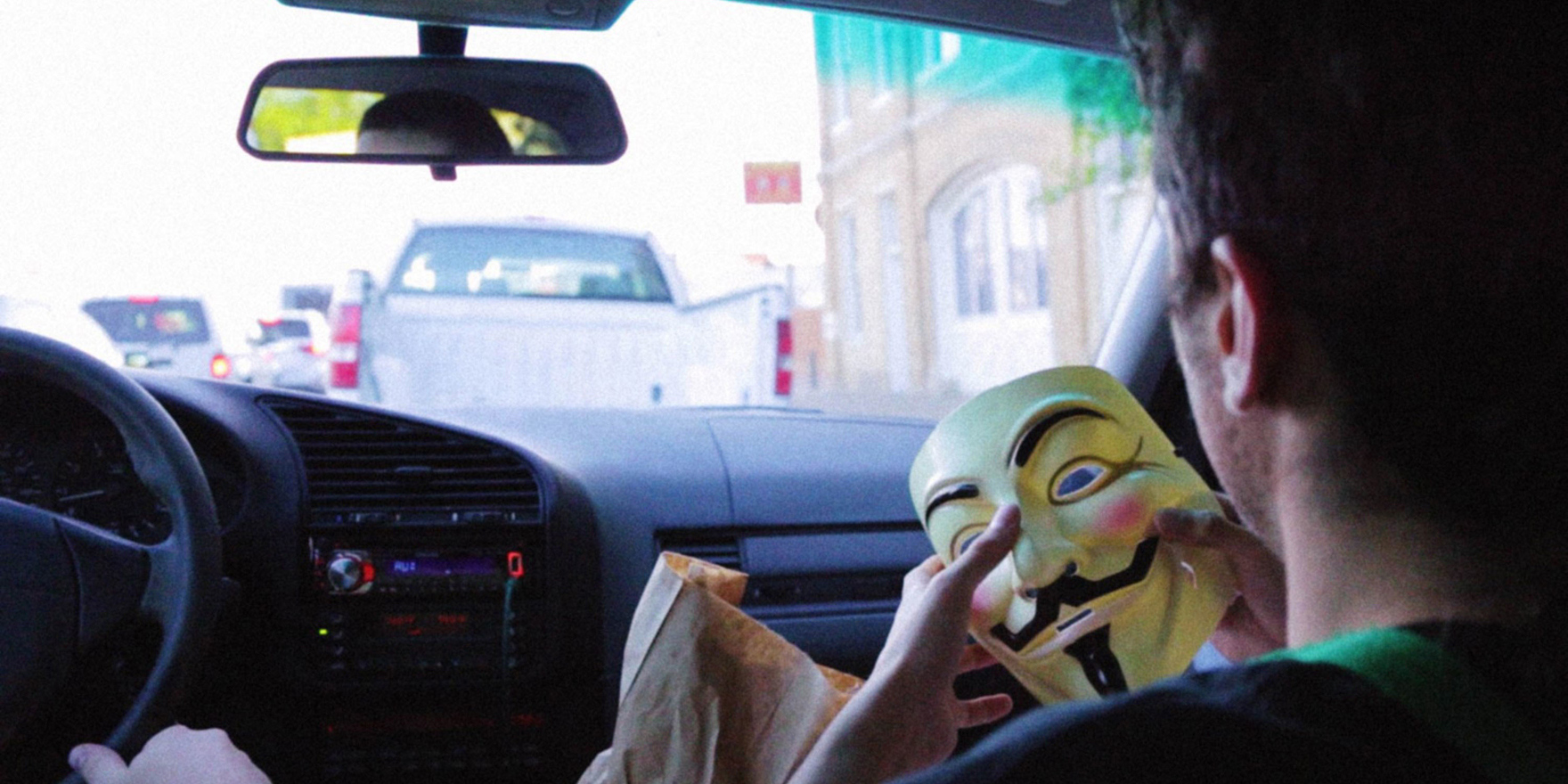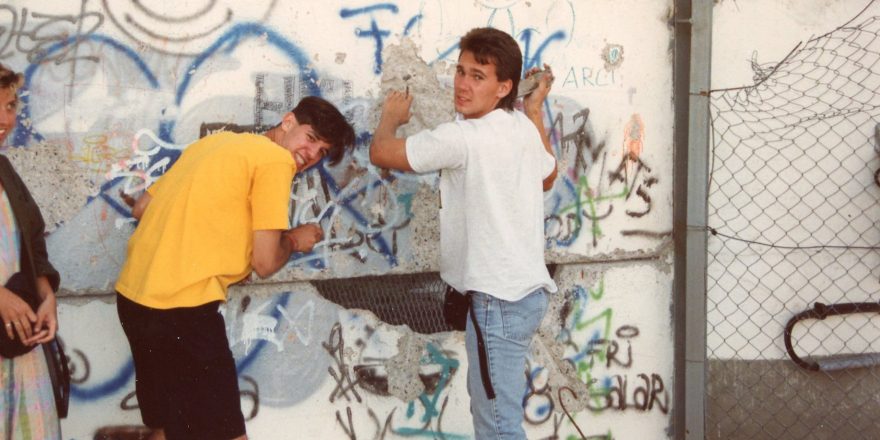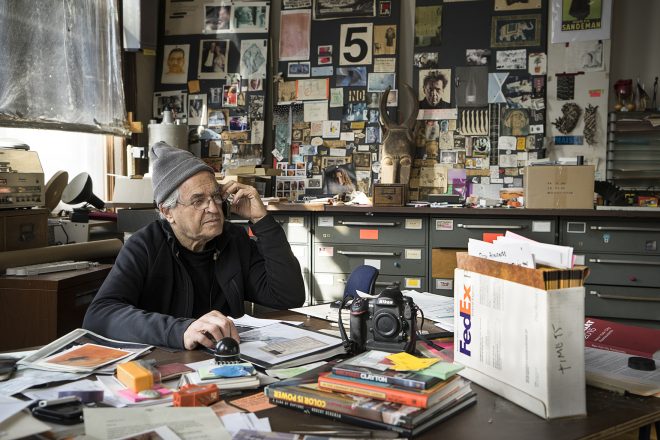For the most part, I think we’re all experts at reading faces. The longer you’re around someone, the more opportunities you have to learn that person’s “tells,” their subtle social cues. You know when he or she is being sincere, maybe you can recognize when they’re growing agitated, if they’re genuinely having a good time or perhaps with near-pinpoint accuracy know when this person is lying to you. These cues are known as “microexpressions.” They often occur as fast as 1/15 to 1/25 of a second and are very hard to fake or cover up. Research shows that there are seven universal human emotional states: disgust, anger, fear, sadness, happiness, surprise and contempt. But the tricky thing is, we don’t all use our face exactly the same way, so if you don’t know what to look for in a universal microexpression, your rules for reading one person won’t apply to the next and it can all get pretty confusing.
I’m infinitely fascinated by how a person chooses to use his or her face. Prior to directing and producing indie films, I worked in the visual effects industry as a face sculptor for over 14 years, and my bread and butter was creating photo-real, highly detailed facial systems for leading digital actors. In 2004, I worked on the team that created King Kong’s face for Peter Jackson’s King Kong. A few years later, I led a team of artists that created all of the faces for the characters and creatures in James Cameron’s Avatar. I worked with each actor to capture the scanned geometry of their character’s emotional states, which would then be deconstructed into individual facial muscle controls in a 3D software package. These controls were then driven by a combination of inputs (i.e. the actor, animators and/or motion capture technicians) to create and fine tune the digital character’s performance in the film.
I discovered the research of psychologist Dr. Paul Ekman early on in my career. Ekman was famous for creating the definitive guide to human facial expressions, the manual Facial Action Coding System. Every single facial movement possible on the human face is catalogued in this book. For many years, this was my bible. I owned two copies, one that never left my desk at work and one that never left my bedside table. This book broke down the specific facial muscles used in combination to create universal emotions. That’s cool and all, but when combining additional research on expression, gesture and emotion, that’s when things got really interesting for me. All this lead to recognizing deception – basically, being able to tell to a high degree if someone was lying or telling the truth.
Surprisingly, understanding microexpressions came in handy throughout the making of my documentary feature, The Cage Fighter. The film is about fighting inside and outside of the cage, so it’s inherently physical. I wanted to make the cinematography and visual storytelling match that physicality. When I began production in the fall of 2013 with mixed martial artist Joe Carman and his family, I was really taken by how comfortable he and everyone was in front of the camera. This came as a huge relief for me and I knew it was going to be a strength for our film. Granted, it was just me by myself shooting and monitoring sound (seven microphones, one for each of the six family members and one directional mic on my camera). I’m sure they would have behaved differently if there had been a reality TV crew filming them. At the start of each shoot day I gave them a friendly reminder to try to not look into the camera, but apart from that they did their thing and I did mine. For the most part, I don’t think they were too concerned either way if I was there filming or not. As I saw it, my job was to just be present. Show up and stay as long as I could and as often as I could. If I did that, their everyday lives would naturally unfold in front of the camera. Now, if I were shooting with Joe and I felt he or the people around him were behaving differently or playing too much for the camera, I’d either momentarily stop shooting or I’d go shoot elsewhere. It was a subtle cue of my own to let them know that wasn’t going to be in this film. This film was going to be real, raw and brutally honest.
Understanding microexpressions also helped greatly during the editing phase when faced with hard decisions on what should stay and what should go. Rather than having to rely on heavy dialogue or exposition scenes to propel the narrative forward, we could be confident knowing sometimes showing less is far better. We wanted the story to unfold with Joe constantly “on the ropes.” He’s reactionary toward everything around him. He’s rarely ever in control, letting the blood, sweat and tears of the fighter’s experiences tell the story in the most physical way possible. Stripping away dialogue is a lot harder than it sounds and can also be quite risky. I spent a lot of time with David Teague – the film’s editor, co-writer and co-producer – bringing audiences into Joe’s internal world. There’s a wide emotional range in this film. Lots of laughing, crying, physical and emotional pain, love. But the scenes that I’m most proud of are actually the subtle ones.
Before sharing three scenes from The Cage Fighter that illustrate how we used microexpressions, for fun, let’s look at the revealing microexpressions of perhaps the most famous case of someone publicly lying under oath:
This 40-second video of President Clinton is littered with examples of deception in expression, gesture and emotion. His gestures of banging on the desk show his agitation and don’t exactly fit presidential behavior. It’s fair to say that we’ve all seen worse gestures since then, so that alone does not give enough information to say if he’s lying or telling the truth. Then you have his lips pressing firmly and quickly together multiple times – I counted six. This shows two things: again, he’s agitated but also it’s a tell that he’s concealing the truth within his mouth and doesn’t want to accidentally let it out. His sixth and final lip pressing happens as he leaves the podium and it is very expressive and obvious he’s not telling you everything. Again, to play devil’s advocate, let’s say you’re still not sold. The most obvious and no-doubt-that-he’s-lying microexpression can be seen in the center of his brow (see red arrow) as he says, “I did not have sexual relations with that woman.”

The wrinkling in the center of his brow is a result of two muscles contracting simultaneously: corrugators (brows furrow inward) and inner frontalis (inner brows raise). Now, look at his lips. That’s a lip pressor if I’ve ever seen one. OK, I think we picked on Bill long enough, so let’s dive into our first film example.
This scene takes place early in the film around the 10-minute mark, when Joe visits his parents’ home. At this point, Joe is still concealing his secret return to cage fighting.
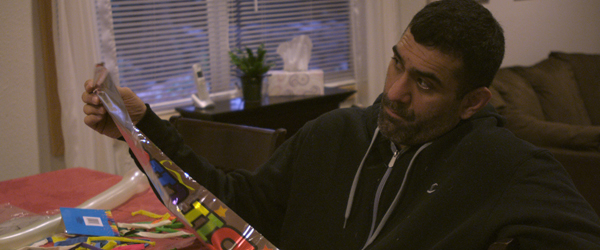
Stan, his father, tries to strike up a conversation with him and asks how he’s doing. Joe responds, “I’m tired.” His leaned-back posture suggests he doesn’t want to be having this conversation. Notice his lips pressing firmly down with a furrow in his brow, a microexpression that we’ve seen before from the Bill Clinton example, but this time from a slightly different emotional state. Clinton was aggressively defending himself. He had everything on the line and so much to lose. Here, Joe is a bit more passive and hoping to avoid any potential argument with his father. Nonetheless, he’s still concealing information. He just doesn’t want to get into it with him tonight.
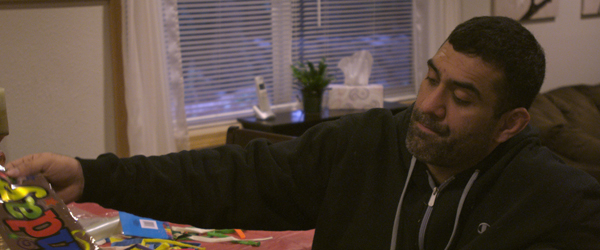
Stan asks, “Tired? Oh, from what?” Joe’s lips are pressing even harder than before. He’s making sure his secrets won’t accidentally slip out.
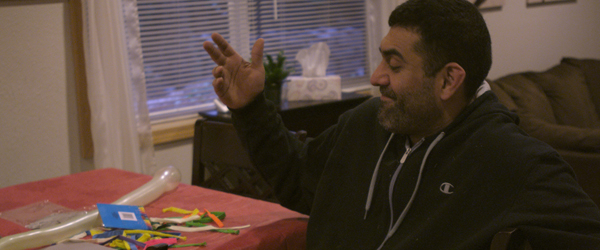
Joe repeats the question, “From what?” The slight smile and the pressing of the lips along with the gesture of throwing his arm up, says that he’s begging to move on from the topic of discussion. He’s waving his hands in defeat and doesn’t utter another word before the scene is over. Joe and his parents had an hour-long conversation about everything under the sun that night. But in the final film, this scene ended up only being 23 seconds long. Within that short amount of time, by staying on Joe’s face we’re able to establish many things, primarily showing Joe’s complicated relationship with his father. This scene sets up a key showdown with Stan later in the film which reveals their troubled past.
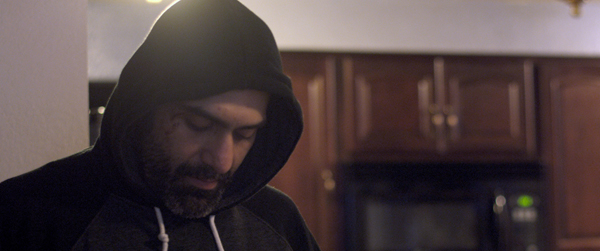
Next, this scene is from the moment Joe arrives home to face his family after he’s just been in a cage fight. Nori, his wife, is alarmed by the big cut on the side of his right eye. “Is that a cut?!” she asks. Joe can’t even bare to look at her. At this moment, there are no words that he can say that can explain the guilt he’s feeling.
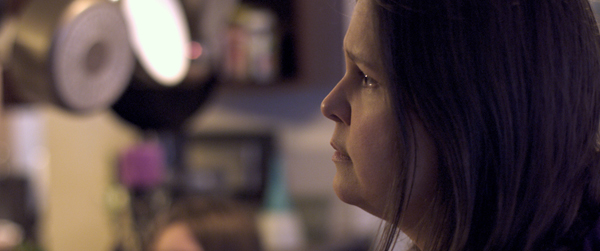
Nori looks on at Joe’s busted face. This expression, in my opinion, is one of the most powerful shots in the entire film. It hurts me to look at it today. She looks at him with concern and pity.
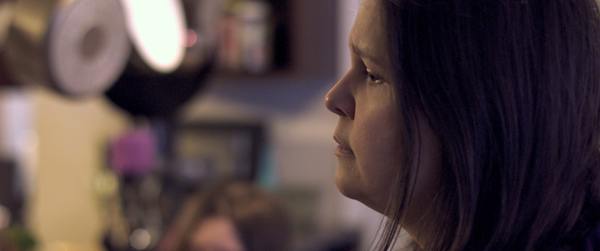
And with just a slight change in eye direction, which she holds for quite a long time, the expression grows even more complex. She’s done feeling concerned for Joe. Now, she must think about herself and their children’s wellbeing. The eyes looking down and to the left suggests internal dialogue, perhaps asking what will happen to the family if he gets seriously hurt? At an early stage of the editing, we weren’t thinking about including this shot in the film. Instead, what existed temporarily was a two-minute scene in the kitchen of Joe and Nori calmly speaking about the fight. That scene was problematic for two reasons: it was dialogue-heavy and it was a restrained conversation. It was clear that everything said in that scene could just be summed up with one single close-up of Nori’s facial expression, which you see here in the final film. Her reaction says absolutely everything.
This last example comes from a question that I’m often asked by audience members at Q&As: “After three-and-a-half years filming with the Carmans, when did you know you were done?” Probably the hardest thing to be sure of as a nonfiction filmmaker is if you have everything you need to tell the story. I feel you know when you’re done when you see a change in your subject, and hopefully that change is significant enough to establish a character arc. In this film, Joe’s priorities shifted. In the beginning, all he wanted to do was a rematch with Clayton, his rival. By the end, all he wanted to do was be there for his family. I first recognized that change, believe it or not, in his facial expression as he entered the cage for the last time. In this first image, Joe is heading into the cage for his first fight. His eyes show determination, he looks clear of mind and focused. His chin is up. He’s confident and ready for battle.
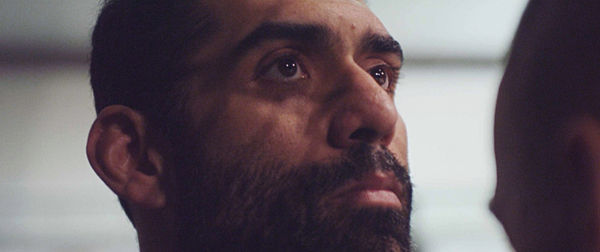
But in the image below, as Joe prepares to enter the cage for his last fight in the film, he already looks defeated. To me, he doesn’t even look like the same man! His head is down and tilted to the side. His upper eyelids are drooping down. His brow is furrowed, clearly distracted. He’s no longer looking into the cage but rather off to the side. When I shot this moment, I knew the fight was not going to end well for him because his face said it all. This is not the face of a fighter who’s mentally and emotionally prepared to win.
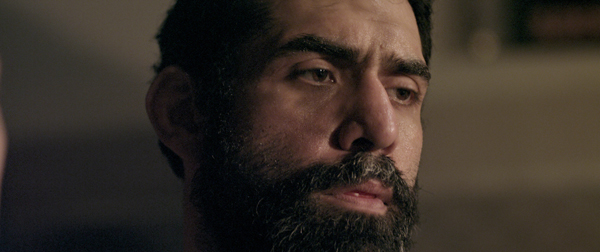
I’ve found that having a background in facial analysis has helped me in a lot of different, random ways in my life. When I started this project, I didn’t know how my understanding of microexpressions was going to inform the way we’d shoot or edit this film, so that was surprising to me. But I suppose once you understand the fundamentals of expressions, gestures and emotions that make up deception, there are some things you can never unsee.



